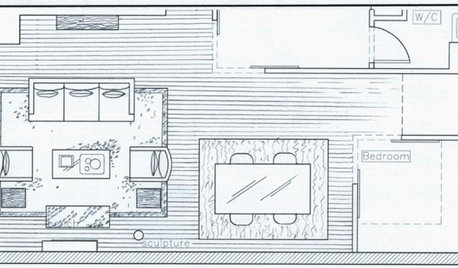Not sure where to start.
bamboo_rabbit
11 years ago
Related Stories

DECORATING GUIDESHow to Decorate When You're Starting Out or Starting Over
No need to feel overwhelmed. Our step-by-step decorating guide can help you put together a home look you'll love
Full Story
CONTRACTOR TIPS10 Things to Discuss With Your Contractor Before Work Starts
Have a meeting a week before hammers and shovels fly to make sure everyone’s on the same page
Full Story
REMODELING GUIDESPlanning a Kitchen Remodel? Start With These 5 Questions
Before you consider aesthetics, make sure your new kitchen will work for your cooking and entertaining style
Full Story
GARDENING AND LANDSCAPINGHow to Start a Home Vineyard
Dreaming of a winemaker's life? You may be able to have it where you are
Full Story
REMODELING GUIDESWhere to Splurge, Where to Save in Your Remodel
Learn how to balance your budget and set priorities to get the home features you want with the least compromise
Full Story
GARDENING GUIDESHow to Stop Worrying and Start Loving Clay Soil
Clay has many more benefits than you might imagine
Full Story
FUN HOUZZ14 Things You Need to Start Doing Now for Your Spouse’s Sake
You have no idea how annoying your habits at home can be. We’re here to tell you
Full Story
DECORATING GUIDESDecorating 101: How to Start a Decorating Project
Before you grab that first paint chip, figure out your needs, your decorating style and what to get rid of
Full Story
INSIDE HOUZZInside Houzz: Starting From Scratch in a Manhattan Apartment
Even no silverware was no sweat for a Houzz pro designer, who helped a globe-trotting consultant get a fresh design start
Full Story
DECORATING GUIDES9 Planning Musts Before You Start a Makeover
Don’t buy even a single chair without measuring and mapping, and you’ll be sitting pretty when your new room is done
Full StorySponsored
Zanesville's Most Skilled & Knowledgeable Home Improvement Specialists
More Discussions






Shaul
equinoxequinox
Related Professionals
Danbury Landscape Architects & Landscape Designers · Gainesville Landscape Contractors · Peabody Landscape Contractors · Springfield Landscape Contractors · Belvedere Park Landscape Contractors · East Haven Landscape Contractors · Gloucester Landscape Contractors · Soddy Daisy Landscape Contractors · Boardman General Contractors · Ewing General Contractors · Goldenrod General Contractors · Hercules General Contractors · Leon Valley General Contractors · Marinette General Contractors · Meadville General Contractorsbamboo_rabbitOriginal Author
bamboo_rabbitOriginal Author
sbryce_gw
bamboo_rabbitOriginal Author
sbryce_gw
bamboo_rabbitOriginal Author
mendopete
bamboo_rabbitOriginal Author
tulips101
mendopete
mendopete
equinoxequinox
bamboo_rabbitOriginal Author
tulips101
lkittle
bamboo_rabbitOriginal Author
bamboo_rabbitOriginal Author
Shaul
JerilynnC
JerilynnC
tulips101
tulips101
mendopete
bamboo_rabbitOriginal Author
mendopete
bamboo_rabbitOriginal Author
mendopete
bamboo_rabbitOriginal Author
sbryce_gw
Shaul
bamboo_rabbitOriginal Author
mendopete
bamboo_rabbitOriginal Author
bamboo_rabbitOriginal Author
JerilynnC
mendopete
bamboo_rabbitOriginal Author
JerilynnC
bamboo_rabbitOriginal Author
11otis
JerilynnC
bamboo_rabbitOriginal Author
tulips101
bamboo_rabbitOriginal Author
11otis
Gerris2 (Joseph Delaware Zone 7a)
equinoxequinox